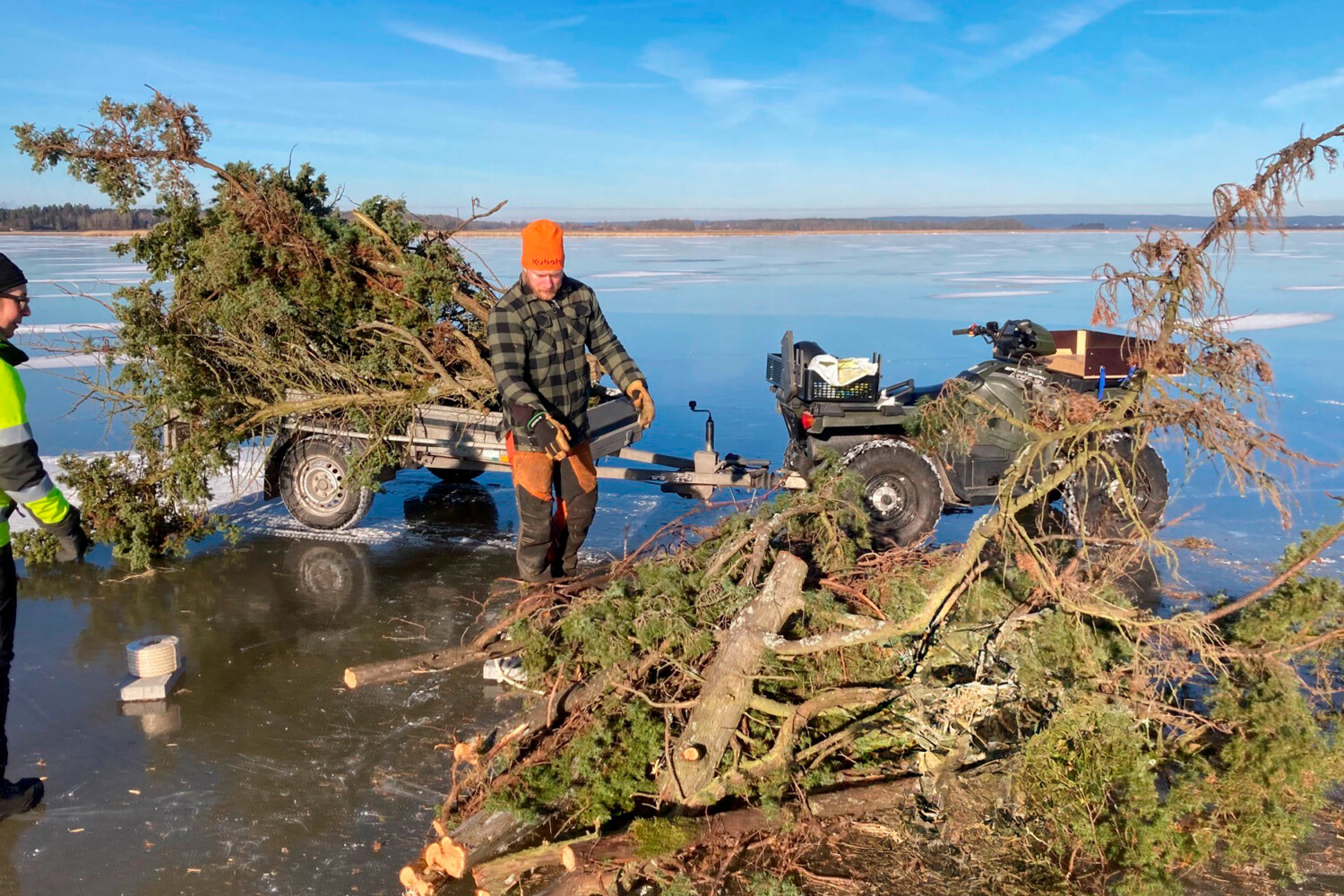Efforts to improve marine habitats in Östergötland has now gained momentum. Last week, artificial reefs were placed in inner Bråviken to support predatory fish and enhance ecosystem conditions.
Concrete actions to improve marine habitats in Östergötland have now begun. With the recent formation of ice in inner Bråviken, five artificial reefs were transported out using ATVs and manual labor. The brushwood was taken from a pasture in the nearby nature reserve as part of conservation management. Artificial reefs consist of bundles of coniferous branches, in this case, juniper, tied together with hemp rope and weighted down. These are placed on the ice so that when it melts, they sink to the bottom.
The primary function of the artificial reefs is to create a substrate for fish, such as perch, to attach their egg strands during April and May. Additionally, the reefs serve as a nursery and refuge for young fish. The goal is to strengthen predatory fish populations in shallow bays.
The aim is to benefit predatory fish in shallow bays
The Importance of Predatory Fish in the Ecosystem
declining due to ecosystem imbalances, including eutrophication and an increase in small fish like stickleback. These predators are important for both recreational and commercial fishing. More predatory fish lead to fewer small fish, which in turn benefits invertebrates and zooplankton that help regulate phytoplankton levels. This results in clearer water, promoting underwater vegetation growth. A healthier vegetation cover further supports the reproduction of predatory fish and reduces sediment disturbance and turbidity.
Svensksundviken – A Coastal Bay with Potential
Svensksundviken is one of the region’s largest shallow bays with high ecological value. However, it is affected by eutrophication, leading to occasional turbidity and sparse underwater vegetation. It will be interesting to see if these artificial reefs attract perch and contribute to a healthier ecosystem.

